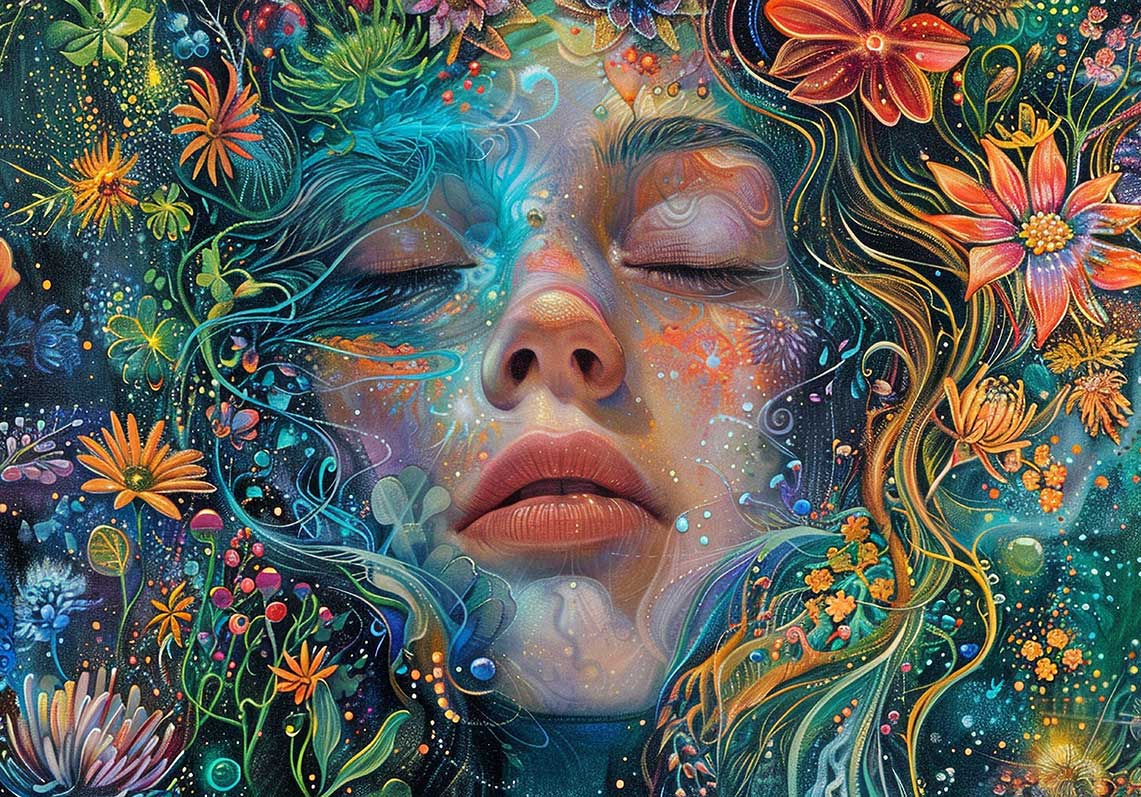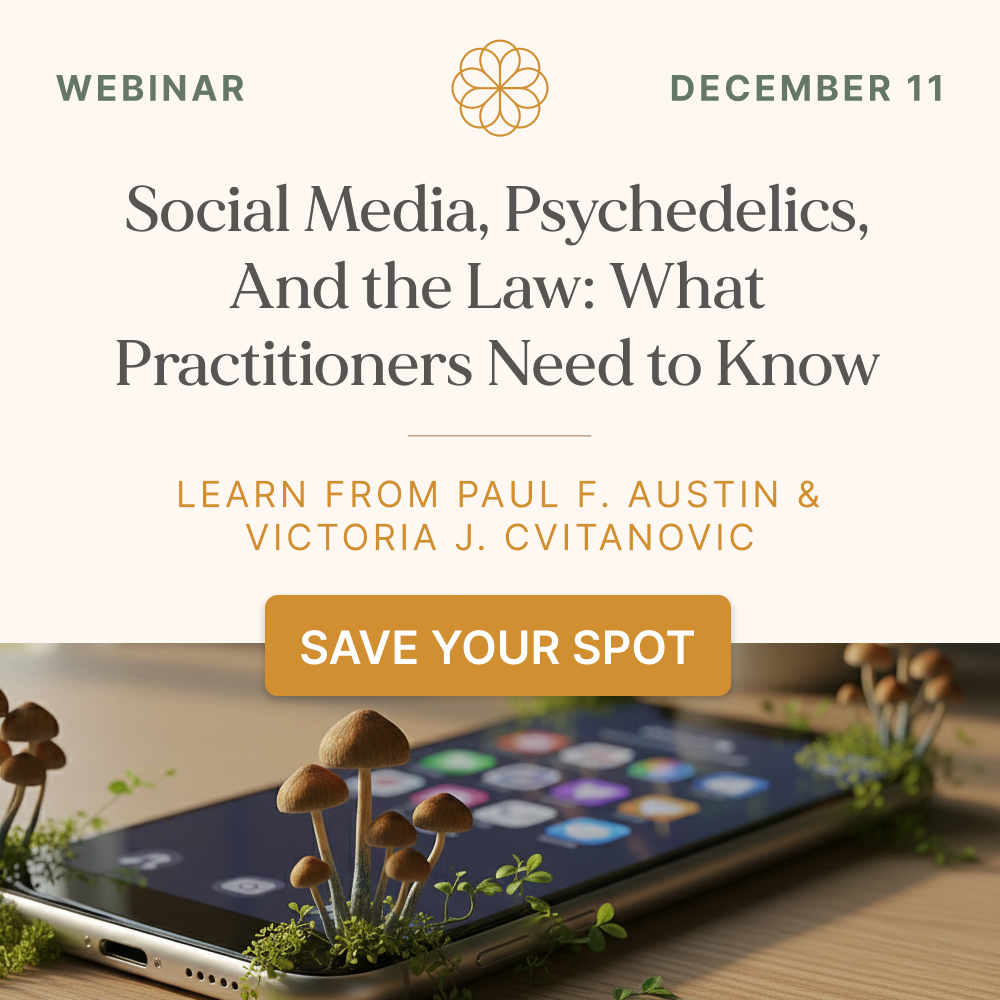Psilocybin can produce “experiences similar to spontaneously occurring mystical experiences” that remain with the individual for many years and are considered to be some of the most meaningful experiences of their life. Not everyone undergoes the same journey, but there’s always something to be learned, and if the preparation is right, the dose is carefully considered, and there is proper integration, even a single psilocybin journey can be life-changing. (1)
So, what does the experience actually look and feel like, and how can individuals and practitioners mitigate the risks and inspire positive experiences?
What are the Four Phases of a Psilocybin Journey?
A psilocybin journey can be broken down into the following four phases:
Ingestion
The dose and method of ingestion can depend on the type of mushroom (see our guide on psilocybin truffles vs psilocybin mushrooms). They can be brewed into a mushroom tea, taken with something sweet, added to a capsule, or simply eaten.
The individual may feel a little nauseous within half an hour of ingesting the mushrooms, but it depends on the method of consumption and whether they are eaten on a full or empty stomach.
There are various ingestion methods that claim to reduce or even eliminate nausea, but such claims are based on anecdotal reports, and there’s no guarantee they will work.
The famous “lemon tek”, for instance, grinds dried mushrooms into a powder and then soaks them in lemon juice for around 15 minutes. It makes for a bitter and acidic cocktail, but advocates claim that it can reduce nausea and hasten the onset.
Clammy hands are also common, but these sensations usually subside as the mushrooms begin to take effect.
Onset
The early effects of a psilocybin experience begin with a shift in perception, with colors and sounds seeming richer and more vibrant. The individual may feel more connected to the present moment and their bodies.
There may be notable changes in well-being and thinking, but these are often preceded by a sense of trepidation, especially in inexperienced users. It’s a sense of wonder and anxiety—are the mushrooms taking effect? Are these feelings down to placebo and anxiety, or is this what psilocybin feels like?
Staying relaxed and balanced can help to alleviate these sensations, and practitioners should encourage their clients to sit back, relax, and let the psilocybin do its thing.
The first signs that the psilocybin is working usually come from changes in perception as opposed to changes in thought patterns. An individual can recognise the former simply by looking at their environment and paying attention to changing colors and textures, whereas the latter is harder to discern and thus difficult to pin down at this stage.
The Experience
The peak of the experience can take individuals on a whirlwind ride where they feel like they have relinquished control. Alternatively, they may feel like they have full control and are able to dig around in their past experiences and present emotions.
Either way, it’s a good time to turn the experience inwards and practice some self-reflection. Anything that was planned before the experience—goals, ideas, beliefs, desires, and fears—should be explored during this stage.
Time may warp, and hallucinations are common. If the feelings turn negative, the sitter or practitioner can keep everything on track and encourage a comfortable and insightful trip.
Bad trips can occur, and they can make a minute of introspection feel like an eternal struggle from which there is no escape. If this happens, it helps to take a deep breath and try to detach from the focus of concern. Focus on the purpose of the experience and the positives that can be derived from it, and don’t get bogged down by the negatives. Fortunately, bad trips are not that common, and with the right support, they are easy to bring under control.
Individuals who have sat with psilocybin multiple times often claim that their so-called “bad trips” have provided them with some of their most positive, life-changing experiences, as they can force you to look at a hidden part of yourself and battle with deep-seated trauma and biases.
The Comedown
Although a “comedown” has negative connotations, that’s rarely the case with psilocybin. It’s gentle and leaves the individual with a sensation of warmth.
Unlike the feelings of emptiness and dread that can follow some substances, the comedown from psilocybin is best characterized as an afterglow, a moment of introspection in which you can begin to understand the experience.
Regardless of whether the trip was wholly positive or negative, the comedown usually delivers a sense of peace and relief. You feel like you have travelled to another plane of existence and seen another side of yourself and the world around you. Nothing looked or felt the same; you took control of the nagging voice in your head, you found reason, fought emotions, and gained a deeper understanding of your issues. But now the veil of irreality has fallen, the journey is over, and reality has returned, albeit under a different guise.
The comedown is also where the integration stage begins in earnest, with the individual opening up about their experiences and the practitioner working with them to integrate those learnings into their life.
How to Prepare and Guide a Psilocybin Journey
Anyone choosing to sit with psychedelics should consider the 6 S’s. A psychedelic practitioner will also ensure that each of these steps is considered, giving the experience the best chance of producing positive outcomes.
Set
Psychedelics are unique in that they act as potentiators of existing emotions. A sedative will send you to sleep if you’re battling insomnia; an anti-anxiety medication will soothe those woes. Psychedelics amplify existing thoughts and feelings, so they work best when the individual is calm and stress-free.
Setting
The ideal setting varies by user. Some might argue that it’s best to be out in nature, as it can invoke feelings of calm. But what about those who feel anxious and uncertain outside? Those feelings will only intensify. The best setting, therefore, is one that makes the individual comfortable. It should also be free of distractions and away from anything that could cause harm.
Substance
The effects of psilocybin vary greatly by dose, so this should be tailored based on the individual’s intent.
Sitter
Whether it’s a practitioner or friend, a sitter is always advised, especially with larger doses and inexperienced adventurers.
Session and Situation
The final two “S’s” relate to the experience itself and the integration process that follows. A qualified psychedelic practitioner can help with both of these stages, working with a client to get them through a positive or challenging session before integrating their learnings effectively.
Harm Reduction Principles
Harm reduction practices are not just used to prevent harm. They also lead to positive psychedelic experiences. The risk of “bad trips” and other adverse reactions drops, and users are able to explore their thoughts, emotions, and preconceptions in complete comfort. (2)
Here are some of the things that a practitioner should consider:
- Assess the client to make sure they are a good candidate for a psilocybin journey.
- Show compassion toward them throughout the experience.
- Adhere to their personal preferences and provide them with as much autonomy as they desire.
- Support them through difficult experiences.
- Make sure they are in a comfortable space away from dangers and distractions.
- Warn against substance misuse (taking much more than recommended, consuming alcohol before/during the experience, or taking other substances).
Conclusion: Guiding Clients Through a Psilocybin Journey
A psilocybin experience can be mild or intense; it can feel like losing control or finally gaining a hold of emotions. It varies by user, dose, and state of mind, but it’s nearly always insightful, and there is something to be learned during every journey.
Follow the 6 S’s closely, engage in considered harm reduction practices, and if you’re a psychedelic integration coach, prepare your client for every step of the process and encourage them to integrate their experiences afterward.
If you’re interested in psychedelic integration and want to learn more, provide more assistance, and become certified, check out the Psychedelic Coaching Institute.






